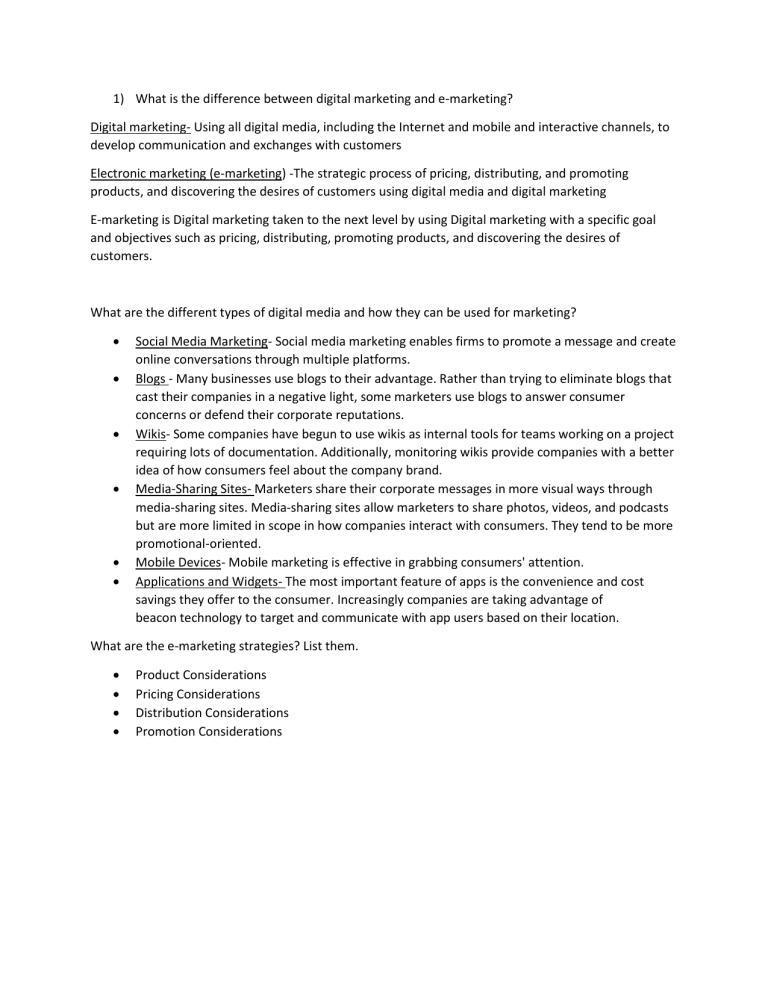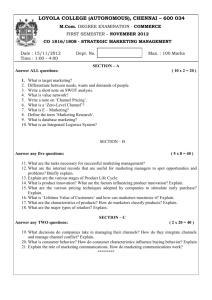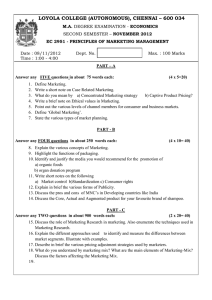
1) What is the difference between digital marketing and e-marketing? Digital marketing- Using all digital media, including the Internet and mobile and interactive channels, to develop communication and exchanges with customers Electronic marketing (e-marketing) -The strategic process of pricing, distributing, and promoting products, and discovering the desires of customers using digital media and digital marketing E-marketing is Digital marketing taken to the next level by using Digital marketing with a specific goal and objectives such as pricing, distributing, promoting products, and discovering the desires of customers. What are the different types of digital media and how they can be used for marketing? Social Media Marketing- Social media marketing enables firms to promote a message and create online conversations through multiple platforms. Blogs - Many businesses use blogs to their advantage. Rather than trying to eliminate blogs that cast their companies in a negative light, some marketers use blogs to answer consumer concerns or defend their corporate reputations. Wikis- Some companies have begun to use wikis as internal tools for teams working on a project requiring lots of documentation. Additionally, monitoring wikis provide companies with a better idea of how consumers feel about the company brand. Media-Sharing Sites- Marketers share their corporate messages in more visual ways through media-sharing sites. Media-sharing sites allow marketers to share photos, videos, and podcasts but are more limited in scope in how companies interact with consumers. They tend to be more promotional-oriented. Mobile Devices- Mobile marketing is effective in grabbing consumers' attention. Applications and Widgets- The most important feature of apps is the convenience and cost savings they offer to the consumer. Increasingly companies are taking advantage of beacon technology to target and communicate with app users based on their location. What are the e-marketing strategies? List them. Product Considerations Pricing Considerations Distribution Considerations Promotion Considerations







